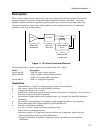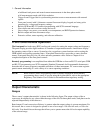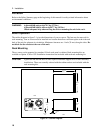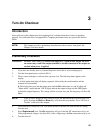
Installation - 2
19
NOTE: To minimize the possibility of instability on the output, keep load leads as short as
possible bundle or twist the leads tightly together to minimize inductance
Wire Considerations
Current Ratings
Fire Hazard To satisfy safety requirements, load wires must be large enough not to overheat
when carrying the maximum short-circuit current of the ac source. If there is more
than one load, then any pair of load wires must be capable of safely carrying the
full-rated current of the ac source.
Table 2-1 lists the characteristics of AWG (American Wire Gage) copper wire.
Table 2-1. Ampacity and Resistance of Stranded Copper Conductors
AWG No. Ampacity
1
Resistance
2
(Ω/m)
AWG No. Ampacity
1
Resistance
2
(Ω/m)
14 25 0.0103 6 80 0.0016
12 30 0.0065 4 105 0.0010
10 40 0.0041 2 140 0.00064
8 60 0.0025 1/0 195 0.00040
NOTES:
1. Ampacity is based on 30
°
C ambient temperature with conductor rated at 60
°
C. For ambient
temperature other than 30
°
C, multiply the above ampacities by the following constants:
Temp. (
°
C)
Constant
Temp. (
°
C) Temp. (
°
C)
21-25 1.08 41-45 0.71
26-30 1.00 46-50 0.58
31-35 0.91 51-55 0.41
36-40 0.82
2. Resistance is nominal at 75
°
C wire temperature.
Voltage Drops
The load wires must also be large enough to avoid excessive voltage drops due to the impedance of the
wires. In general, if the wires are heavy enough to carry the maximum short circuit current without
overheating, excessive voltage drops will not be a problem. The voltage drops across the load wires
should be limited to less than 2% of the output voltage.
Refer to Table 2-1 if you need to calculate the voltage drop for some commonly used AWG copper wire.


















